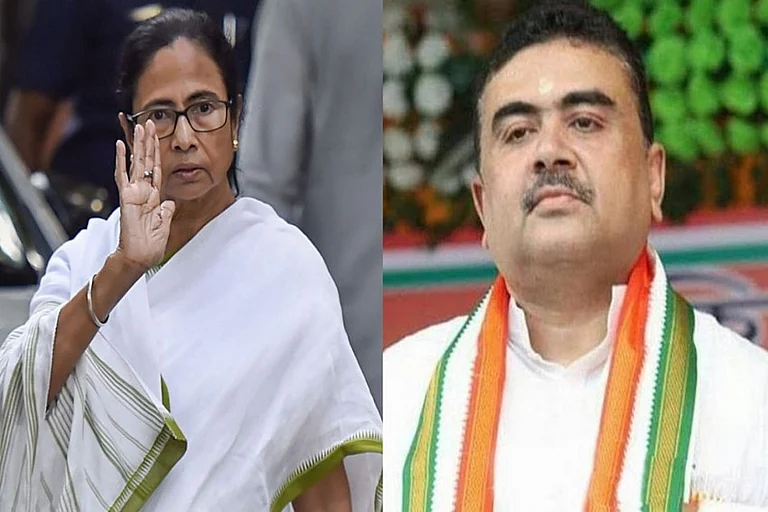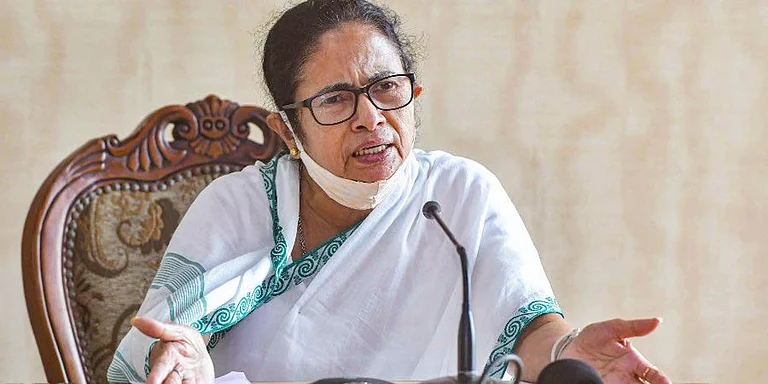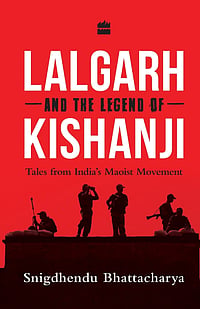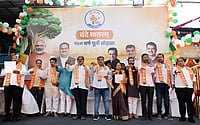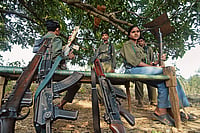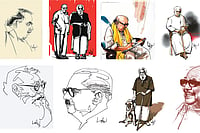West Bengal chief minister Mamata Banerjee’s slogan Joy Bangla, meaning victory to Bengal, has stirred a great deal of controversy over the recent months, with the Bharatiya Janata Party (BJP) calling it a secessionist slogan as it is known as the war cry of the Bangladesh Liberation War.
“Mamata Banerjee takes insult in Jai Shree Ram. She feels it was wrong that some people shouted it during Prime Minister Narendra Modi’s tribute to Netaji at Victoria Memorial Hall on January 23. But how will she justify shouting Joy Bangla, which is a Bangladeshi slogan, at the same event? TMC MPs also raised the slogan in Parliament. Isn’t this part of their grand agenda to make West Bengal part of greater Bangladesh, as some Islamist outfits want?” asked
BJP’s state unit president Dilip Ghosh.
Apart from being the key slogan of Bangladesh’ ruling party, Awami League, Joy Bangla is also the national slogan of Bangladesh since a Dhaka high court order in 2020.
On social media and from public rallies, the BJP’s national and state-level leaders are regularly taking digs at Mamata Banerjee for adopting a foreign slogan. Incidentally, the chief minister had also wanted to change the name of the state from West Bengal to Bangla, a proposal that has not been cleared by the Centre.
Mamata Banerjee adopted Joy Bangla as one of the party’s three slogans in 2017 – the two others being Bande Mataram and Jai Hind – after the saffron camp’s impressive show of strength in the 2017 Ram Navami celebration that launched Jai Shree Ram as a dominant slogan in the state for the first time. Jai Shree Ram was hardly heard of in Bengal before 2017.
The Trinamool Congress says Joy Bangla does not belong to Bangladesh, or its ruling party Awami League, as the roots of the slogan lie in the writings on Kazi Nazrul Islam, one of Bengal’s most popular poets usually referred to as Bidrohi Kobi, or the rebel poet. Islam is the national poet of Bangladesh and no less popular in West Bengal.
TMC Rajya Sabha MP and national spokesperson Sukhendu Sekhar Roy cited two of Islam’s writings where the roots of the slogan lie – the first is a 1922 poem titled Purna Abhinandan and the second is a 1942 essay titled Bangalir Bangla (Bengal of the Bengalis). In the first, the poet used the term “Joy Banglar Purnachandra” and he ended the 1942 essay with “Bangla Bangalir Hok, Banglar Joy Hok, Bangalir Joy Hok (Let Bengal belong to the Bengalis, victory to Bengal, victory to the Bengali).”
“I want to ask the BJP if the Maharashtrian leaders who end their speeches with Jai Maharashtra are also raising secessionist slogans. The BJP is promising to build Shonar Bangla. But the term comes from a Rabindranath Tagore song, Amar Shonar Bangla, which is the national anthem of Bangladesh. Is the BJP also promising to turn West Bengal into Bangladesh?” Roy said.
The two Bengals, though politically separated for over seven decades, share a common linguistic and cultural heritage of a few centuries. During the Liberation War, in which the government of India stood by what was then East Pakistan, Bengalis of West Bengal had also resonated with their eastern neighbour’s cry for liberation from the dominance of Urdu-speaking West Pakistan.
Islam, though the national poet of Bangladesh, belongs to both parts of Bengal, Bengalis would agree almost unanimously.
Roy is not alone to attribute the origin of the slogan to the writings of Islam. Bangladesh Prime Minister Sheikh Hasina, the daughter of the leader of the Liberation War, “Bangabandhu Sheikh Mujibur Rahman, has repeatedly claimed so, including at the celebration of the poet’s 116th birth anniversary at Kumilla in Bangladesh in 2015 and 119th birth anniversary in West Bengal’s West Burdwan district in 2018.
“Bangabandhu took the words Joy Bangla from Nazrul’s writings,” she had said.
This is the most common perception of the origin of the slogan. Of late, members of several Bengali ethnic organisations in West Bengal, such as Bangla Pokkho and Jatiyo Bangla Sammelan, as well as individuals, are taking to social media to counter the BJP’s propaganda and citing Nazrul’s writings as the root of the slogan. In fact, Bangla Pokkho was the first organisation to start raising the slogan in West Bengal, several months before Mamata Banerjee incorporated it.
Those criticising the BJP's campaign on social media ask how shouting Joy Bangla could be a crime if saying Jai Bihar or Jai Maharashtra did not amount to one. BJP supporters, on the other hand, argue that there is no other foreign territory called Bihar or Maharashtra but Joy Bangla is already a foreign slogan.
A thorough reading of Nazrul’s 1922 poem reveals Nazrul never uttered Joy Bangla. At one place he writes Joy Banglar Purnachandra, but here he hails “the Purnachandra (an arrested freedom-fighter) of Bengal” and not saying victory to Bengal. This poem is unlikely to be the root of the slogan, while the 1942 essay definitely carries the sentiments that the slogan expresses. “Banglar Joy Hok” and “Joy Bangla” are essentially the same.
However, this narrative has been contested. There is no reliable documentation supporting the theory that “Bangabandhu” picked up the slogan from Nazrul’s writings. Rather, there are well-documented research works that say the founder of Bangladesh was not even the person who coined the slogan; he picked it up from the students’ movement led by Chhatra League, the student wing of Rahman’s party, the Awami League, which is now led by Hasina.
There are several research work and memoirs that trace the origin of the slogan to a students’ meeting at a canteen on the Dhaka University campus on September 15, 1969, when one of the students, Aftab Uddin Ahmad, raised the slogan in the middle of the meeting.
In his book JaSaD-er Utthan Patan: Asthir Samay Er Rajneeti, Mahiuddin Ahmed wrote that within moments of Ahmad raising the slogan, another student, Helalur Rahman echoed it. From that day, the slogan started getting raised in Chhatra League’s events.
According to several accounts, the slogan started gaining popularity after a banner designed by painter Kamal Ahmed was put up at public rallies of Chhatra League and Awami League, on January 4 and 11, 1970, respectively. Rahman was present of the dais at the January 7 events a student leader, Sirajul Alam Khan, raised the slogan, even though “Bangabandhu” did not raise it that day.
This article mentions June 7, 1970, as the day when Mujibur Rahman raised the slogan for the first time while addressing the Awami League leadership at Race Course ground in Dhaka.
The origin of the raising of the slogan at the students’ meeting in Dhaka has been traced back to a visit of Chhatra League leadership to West Pakistan, where in the Sindh province the “Jiye Sindh”, or long live Sindh, the slogan was gaining popularity against Pakistan-government.
However, the claim of the slogan being raised for the first time at the September 15, 1969 meeting has been contested as well. Sirajul Alam Khan, who was a leading student activist and member of the secret Bengali nationalist group ‘Nucleus’ (founded in 1962) and Swadhin Bangla Biplabi Parishad (Forum of revolutionaries for free Bengal), has said on numerous occasions that Joy Bangla was being secretly used by the members of these two groups even before the Dhaka University incident. These groups even brought out cyclostyled pamphlets titled Joy Bangla.
Khan, too, has mentioned about the September 15 meeting (in which he too was present) in his memoir “Ami Sirajul Alam Khan: Akti Rajnoitik Jeebonalekhyo”, and said that the two student leaders who raised the slogan during the September 15 meeting in 1969 were both members of the secret groups founded in 1962-63.
From all accounts, it appears that the slogan evolved sometime between 1962 and 1969 before Mujibur Rahman popularised and immortalised it, but there has been no consensus among researchers on where it came from.
The history of Bengali nationalism or sub-nationalism dates back to the time of freedom fighter
“Deshbandhu” Chitta Ranjan Das in the early 1920s. Das had on several occasions referred to the Bengalis as a nationality for whom language was a greater identity over religion. Many of Bengal’s pre-Partition literary stalwarts have referred to the whole of undivided Bengal as Bangladesh.
Nazrul’s 1942 essay is quite widely seen as a prime source of inspiration for Bengali nationalism. He wrote, “Ei Pobitra Bangladesh/ Bangalir-Amader/ Diya Proharen Dhananjay/ Tarabo Amra - Korina Bhoy/ Joto Porodeshi, Dashyu Dakat/ Rama-der Gama-der".
Translated into English, it means, "This holy land of Bangladesh belongs to us, the Bengalis. We will thrash out of the land, without fear, all the outlander looters, the Ramas and the Gamas."
Literary critics have read “the Ramas” as a reference to north Indian, Hindi-speaking Ram-worshippers, and “the Gamas” as a reference to western India's Urdu-speaking population.







